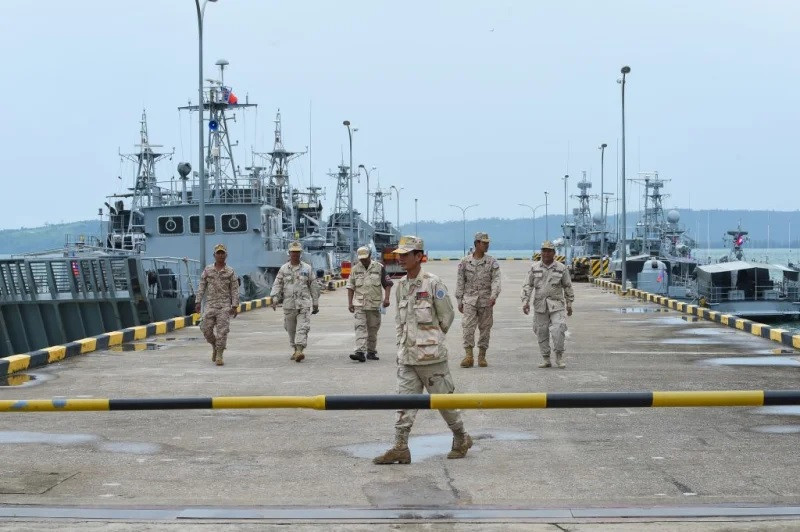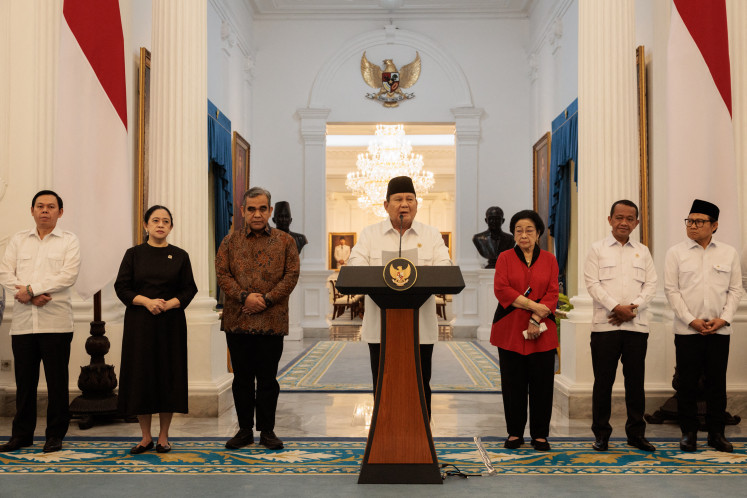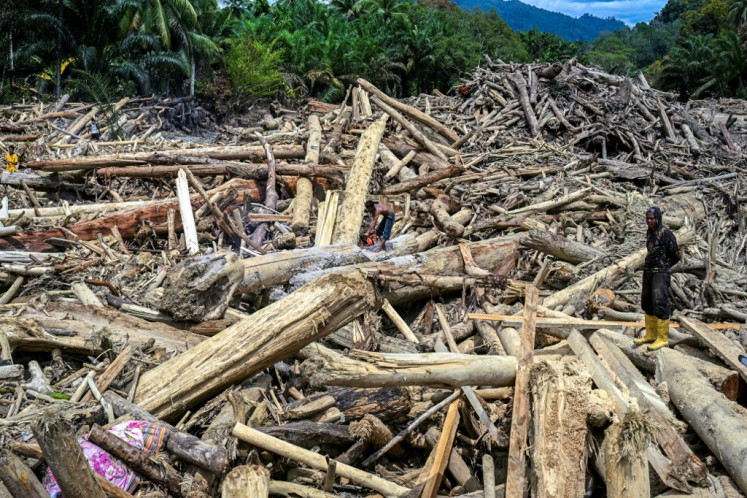Popular Reads
Top Results
Can't find what you're looking for?
View all search resultsPopular Reads
Top Results
Can't find what you're looking for?
View all search resultsChina’s Cambodian dream, a debt trap and security concerns
In the long term, China's interest in the Gulf of Thailand will increase, and unilateral and assertive actions by China will increase not only in the Paracel Islands, Spratly Islands, and Natuna Islands, but also in the Gulf of Thailand.
Change text size
Gift Premium Articles
to Anyone
I
t is not new that China has been trying to establish control and authority over the global politics and has gone to lengths for establishing and fulfilling his hegemonic interests in south east Asia. China’s Cambodian dream is a new link to the chain, a process of setting outposts for controlling the south east Asia. China’s upcoming naval base in Cambodia is one such example of such outposts.
The key factors behind China's choice of Cambodia are the political background of good relations with non-democratic Hun Sen regime in Cambodia, the economic background of being a country where Chinese investment concentrates and many Chinese businesses/companies have established operations, and the historical background of having unsolved land border demarcation issues with Vietnam, which is a Chinese rival in conflict over the South China Sea.
The stagnation of relations between Cambodia and the United States has also contributed to Chinese concentration to its influence. The Cambodia-the US relations were affected by the unilateral cancellation of the "Angkor Sentinel" joint military exercise in January 2017 by Cambodia, followed by the dissolution of the Cambodia National Rescue Party (CNRP) in late 2017. The US criticized the limitation of democracy, passed the Cambodia Democracy Act and imposed sanctions on Cambodian officials and businessmen.
Tensions also exist in Cambodia-Vietnam relations over the unfinished demarcation of their land border, ethnic Vietnamese immigrants in Cambodia, and social perception on Vietnam’s role during liberation of Cambodia from the Khmer Rouge. Therefore, China has been seeking to strengthen Cambodia's military power for its "offshore balancing" approach for “proxy war” instead of directly deploying or engaging the People’s Liberation Army (PLA) or its Navy (PLAN) to Cambodia.
I imagine that this will have the strategic effect for Beijing to prevent Hanoi from concentrating its strategic resources in the South China Sea. Also, in 2022, Cambodia holds the ASEAN chairmanship. In its last ASEAN chairmanship in 2012, Cambodia was called "China's proxy" because of its blatant pro-China stance.
The establishment of naval base in Cambodia also poses a great security risk for the countries in Southeast Asia. In the modernization and expansion of the Ream Naval Base will allow the Royal Cambodian Navy (RCN) to operate anti-ship and air defense missile-carrying vessels such as Chinese Type 22 (Houbei class) missile boats, Type 056 corvettes, and Type 054A frigates, in contrast of current capabilities of the RCN which has only capability of operating patrol boats without anti-ship missile.
A secret agreement between Cambodia and China likely exists and allows China to use some facilities for military purposes. There will be frequent stationing and port calls by Chinese naval vessels, especially the second navy, namely Chinese Coast Guard patrol vessels and the third navy or fishing vessels of the maritime militia.
This would add an important supply base for China, which is eager to prevent foreign economic activity within the "nine-dash line," which is being conveniently expanded and used by China without any clear specific definition. In this context, there is possibility that Beijing will attempt to extend "nine-dash line" as far west as to the Gulf of Thailand.
The bigger problem, however, is that there are many large-scale infrastructure development projects being undertaken in Cambodia by Chinese. For example, the Dara Sakor International Airport (3,900-meter runway) project by China's Union Development Group, and a 15m deep-water port is being built in Kampot, the port would allow Chinese aircraft carriers as well as Type 075 amphibious assault ships, Type 072A landing ships, and fleet supply ships to sail in. It could contribute expanding the scope of Chinese naval activities in the South China Sea and beyond.
I believe that Vietnam, which is at odds with China over the South China Sea issue, will be most affected by these developments. In response to the strengthened Cambodian Navy, it will be essential for the Vietnamese Navy to strengthen its forces in the Fifth Regional Command, which has its headquarters in Phu Quoc Island close to Cambodia.
It is pointed out that the Vietnamese maritime militia in the region is already being strengthened, but if the Cambodian navy is equipped with anti-ship missile operational capability, it requires Vietnamese side to expand its naval forces, and there is a possibility that a regional naval arms race will be triggered.
Among the China's long-term interest is promoting the "Maritime Silk Road" concept to secure access to the Gulf of Thailand and project its power to the Indian Ocean through the Kula Isthmus.
This has the geopolitical importance of securing alternative infrastructure in the Malacca-Singapore Strait for China, which wants to resolve the so-called "Malacca dilemma," given its high dependence on crude oil imports (72 percent in 2021) and the fact that more than 65 percent of imported crude oil is imported from the Middle East and African countries through the Malacca-Singapore Strait.
Even if fossil fuel imports from Russia increase after the Russian full-scale invasion of Ukraine, China will need to continue to increase crude oil imports from Middle Eastern and African countries to meet its robust domestic demand. Thus, in the long term, China's interest in the Gulf of Thailand will increase, and unilateral and assertive actions by China will increase not only in the Paracel Islands, Spratly Islands, and Natuna Islands, but also in the Gulf of Thailand
China’s influence over ASEAN will be further strengthened with “rule of money” and “rule of gun” approach instead of “rule of law”. Thus, “like-minded” countries will not be able to counter this tsunami-like Chinese massive influence unless they coordinate and collectively manage their available assets, resources, and funds.
In addition to the security threats, it poses a great economic threat for ASEAN countries. China's trade and foreign direct investment influence will decisively increase among some ASEAN countries and the second “Cambodia” like China-proxy may emerge as a military power in the future due to their strategic calculation for attracting trade, investment, and technology support from China. This however would add to the confusion in ASEAN, which even just now is unable to come up with a unified policy on the South China Sea issue.
China is Cambodia's largest source of imports, accounting for 31 percent of total imports in 2020. On the other hand, the US is Cambodia's largest export source, accounting for 25.2 percent of all exports in the same year. Cambodia’s deterioration in relations with the US, and further economic sanctions, and export restrictions by Washington will cause Cambodian economy to crumble, which in turn further strengthens the control of Chinese investing parties over resources of Cambodia and under the pretext of securing the Chinese investment more and more bases will come up in Cambodia to further fuel the tensions in South China Sea and crush the sovereignty of ASEAN countries.
This will turn Cambodia into a tool of China, A design meticulously carved out for Cambodia by China.
***
The writer is an international political scientist and security studies scholar at Faculty of Social Science, Charles University, Prague.











